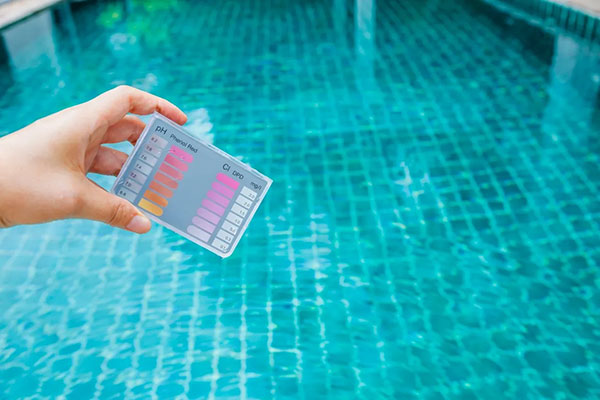Greetings, pool owners! I’m Larry from ACHTWOO Pools, here to make your life easier with some clever tips on balancing your pool chemistry efficiently. Whether you’re in Southeast Texas or anywhere else, these strategies will help you maintain crystal-clear water with less time and effort. Reach out to us at (409) 734-7665 or check out our website at 409pool.com for any pool needs.

Understanding Pool Chemistry Basics Before we dive in, remember the key elements we’re balancing: pH, chlorine, alkalinity, calcium hardness, and cyanuric acid. Each plays a crucial role in keeping your pool water safe and inviting.
1. Get the Right Testing Kit
- Test Strips vs. Liquid Tests: While test strips are quick, liquid tests are more accurate. Invest in a good liquid test kit for precise measurements, which can save you time by avoiding over-correction.
- Digital Testers: For those who love technology, digital testers provide quick, accurate readings without the hassle of matching colors or interpreting results.
2. Regular Testing Schedule
- Weekly Testing: Instead of daily checks, test your pool water once a week. Consistency helps you anticipate changes rather than react to them, saving time on adjustments.
- After Heavy Use: Test immediately after significant pool use or after rain to catch any sudden shifts in chemistry.
3. Batch Adjustments
- pH and Alkalinity Together: If your pH and alkalinity are off, adjust them together. Baking soda can raise both, while muriatic acid can lower them. Doing this in one go reduces the number of adjustments needed.
- Shock Treatment: If your chlorine levels drop, consider adding a shock treatment which not only boosts chlorine but also oxidizes contaminants, potentially reducing the need for frequent minor adjustments.
4. Smart Chemical Use
- Use Stabilizers: Cyanuric acid stabilizes chlorine, reducing how often you need to add it, especially in sunny areas.
- Pre-Dissolve: For dry chemicals, pre-dissolve them in a bucket of pool water to prevent them from clumping on the pool floor, which can lead to uneven distribution and extra work.
5. Automation for Efficiency
- Automatic Chemical Feeders: These devices can dispense chemicals based on your pool’s needs, saving you from manual dosing every few days.
- Pool Management Systems: Modern systems can monitor and adjust your pool’s chemistry automatically, alerting you only when intervention is necessary.
6. Educate Yourself on Chemical Interactions
- Understand Synergy: Knowing how chemicals affect each other (e.g., raising pH might lower chlorine effectiveness) means you make fewer adjustments over time.
- Avoid Overcorrecting: Small, frequent adjustments are usually less effective than larger, less frequent ones because of how chemicals interact.
7. Seasonal Adjustments
- Prepare for Changes: In summer, you’ll need more chlorine; in winter, less. Adjusting for seasonality can streamline your chemical management.
8. Keep Records
- Log Your Adjustments: Keep a simple log of what you’ve added and when. This can help predict future needs and reduce trial and error.
Conclusion Balancing pool chemistry doesn’t have to be a time-consuming task. With the right approach, tools, and a bit of foresight, you can maintain your pool’s water quality efficiently. Here at ACHTWOO Pools, we’re committed to making your pool experience as enjoyable as possible. For more detailed advice or to schedule a professional check-up, call us at (409) 734-7665 or visit 409pool.com. Enjoy that perfect swim with less hassle!




